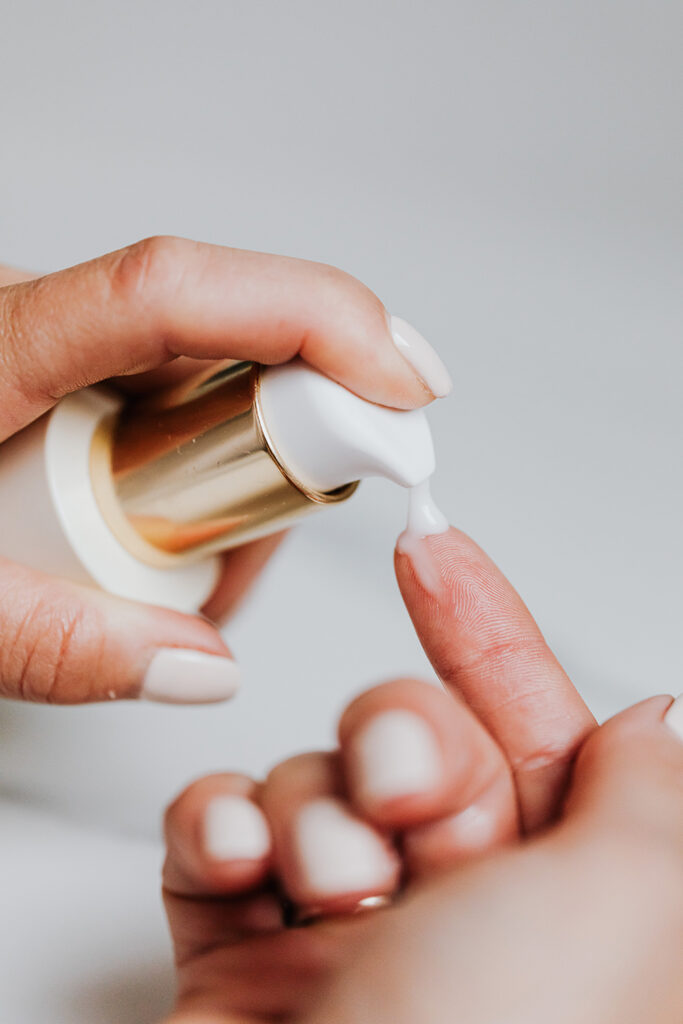New Skin Care Routine, Who Dis?
Becoming someone who religiously upkeeps a skincare regiment such as a recommended routine can be a challenge. (Okay, we see you joining the self care club!) The implementation of a preppy skincare routine can be a lot of work and dedication, but its necessary nonetheless. If you struggle with consistency, there are now findings that project cannabis as a part of your routine wellness for skin care.
In the dynamic landscape of medical research, a recent study has unveiled a promising avenue for addressing skin problems. As researchers delve into the therapeutic potential of minor cannabinoids sourced from cannabis, they found that minor cannabinoids like THCV, CBDV, CBC, and CBN emerge as intriguing candidates that could revolutionize the treatment of conditions such as psoriasis, eczema, and acne.

Finding Cannabis’ Connection to Skin
Published in the esteemed peer-reviewed journal Molecules, the study by Polish researchers Emilia Kwiecień and Dorota Kowalczuk presents a compelling case for the therapeutic potential of minor cannabinoids in the realm of dermatological care.
To arrive at their groundbreaking conclusions, the researchers meticulously reviewed a plethora of existing scientific literature, unveiling the multifaceted pharmacological activities exhibited by these lesser-known compounds.
Their findings shed light on an array of attributes, ranging from anti-inflammatory and analgesic to antimicrobial and anti-itch properties.
Challenges of the Study
While the findings open doors to new possibilities, the authors emphasize the need for additional research to validate the effectiveness and safety of minor cannabinoids.
They acknowledge the complex landscape ahead, including considerations of their impact on the nervous system, quality control, regulations, and ethical and legal dimensions. Striking a harmonious balance between reaping benefits and minimizing potential risks remains paramount in charting the path forward.
Beyond the Surface: Delving into Cannabinoid Attributes
The study’s exploration extends to other recently discovered cannabinoids such as CBM and CBE, unveiling their latent anti-inflammatory potential. These compounds usher in fresh avenues for scientific exploration, providing new angles for investigating specific disease conditions.
Notably, CBC’s anti-inflammatory and antioxidant effects paint a promising picture for addressing diverse challenges, including acne, psoriasis, and atopic dermatitis.
Skin Care and CBDV
Certain minor cannabinoids shine as tailor-made solutions for addressing specific dermatological conditions. Consider CBDV, renowned for its anti-inflammatory prowess.
This makes it a potential candidate for soothing the itching and swelling commonly associated with atopic dermatitis. Furthermore, CBDV’s dual attributes of anti-inflammatory and antioxidant potential position it as a potential ally in the healing of acne lesions.
THCV: A Mighty Contender for Acne Management
Among the cannabinoids under scrutiny, THCV emerges as a powerful contender in the fight against acne. Its potential to regulate oil-production coupled with its anti-inflammatory and antibacterial attributes positions it as a potent tool to combat inflammation and the bacteria implicated in acne development.
Spectrum of Benefits for Skin
The study assembles a spectrum of minor cannabinoids that exhibit possible therapeutic applications. The roster includes CBDV (cannabidivarin), CBDP (cannabidiforol), CBC (cannabichromene), THCV (tetrahydrocannabivarin), CBGA (cannabigerolic acid), CBG (cannabigerol), and CBN (cannabinol), along with the more recently unearthed CBM (cannabimovone) and CBE (cannabielsoin).
Into the Body, Out the Skin
The potential effects of these cannabinoids stem from their interaction with the body’s endocannabinoid system—a central regulatory mechanism responsible for maintaining overall health.
This intricate system plays a pivotal role in regulating an array of biological processes within the skin, encompassing immune responses, cell growth, differentiation, and survival. Its remarkable ability to suppress skin inflammation stands as one of its defining functions.
Cannabinoids and Aging Skin
Interestingly, the study ventures beyond traditional therapeutic applications having to do with simply ingesting. and speculates about the potential of topical applications of minor cannabinoids in mitigating the effects of aging—an avenue ripe for exploration and discovery.
Did Someone Say Topicals?
We here at Fairwinds happen to make an award-winning topical lotion for pain and discomfort. While it does have moisturizing properties, this is more about treating aches and pains than skin care. Would it be beneficial to look into skincare with a topical that is considered so life changing?
If you’re interested in dabbling with cannabis topicals, look no further and give ours a try to see how your skin and body may react to it. If you’re looking for acne self care, here’s a list of CBD/ cannabis brands for facial skin care. Otherwise, feel free to let us know what you think about potential future Fairwinds topicals and skin products. We always love to hear from our readers.

A Promising Frontier for Skin Care
In conclusion, the study shines a spotlight on a captivating frontier within medical research. By unveiling the latent potential of minor cannabinoids, researchers pave the way for a new era of therapeutic solutions for dermatological challenges that have long perplexed patients and medical professionals alike. With further exploration, these compounds may very well emerge as potent tools in the quest for healthier, happier skin.
